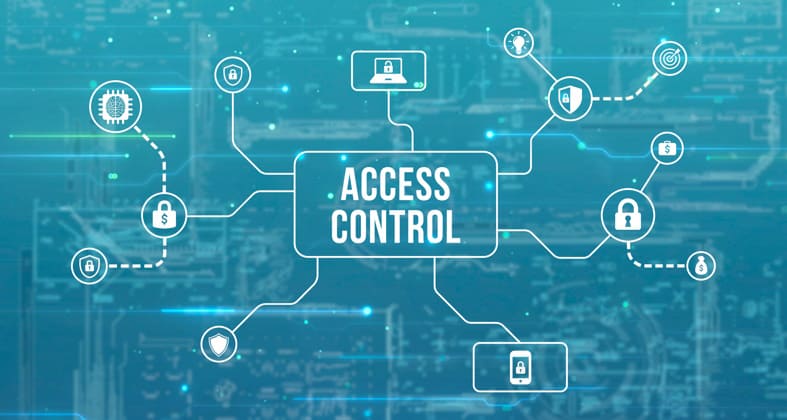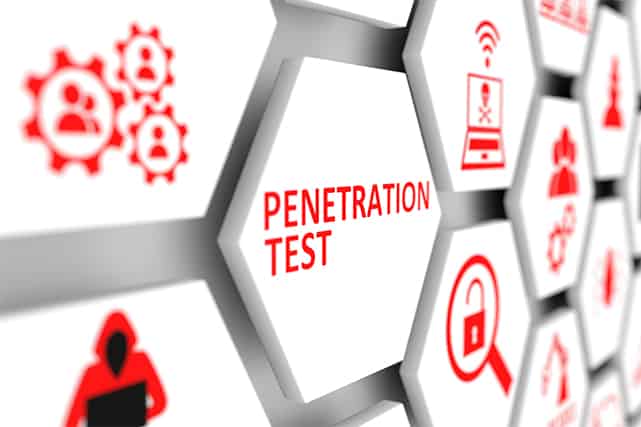Securing AI-powered applications requires a comprehensive strategy. A focus on strong authentication and access controls is crucial, along with the implementation of advanced encryption techniques to protect sensitive data.
Regular security audits and penetration testing play a vital role in identifying vulnerabilities. Incident response plans should be well-established to address potential breaches. AI systems must comply with strict data privacy regulations while maintaining model integrity.
Effective governance involves continuous monitoring and anomaly detection to identify and mitigate threats. Collaboration between developers and security professionals strengthens the resilience of AI applications.

Further insights are available to enhance the security of AI applications against emerging threats.
Table of Contents
Understanding AI Vulnerabilities
The integration of AI technologies into various applications presents challenges related to AI vulnerabilities. The complexity of AI systems, which frequently involves intricate algorithms and extensive datasets, leads to these vulnerabilities. The Wallarm report indicates a concerning increase in AI-related API vulnerabilities, highlighting the necessity for organizations to address potential weaknesses. AI vulnerabilities include model inversion attacks, data poisoning, and adversarial attacks, which can compromise the integrity and security of AI systems. Vigilance in identifying and mitigating these threats is crucial for protecting sensitive information and maintaining system reliability. Essential steps in managing these vulnerabilities effectively include regularly updating AI models, conducting thorough security audits, and fostering collaboration between developers and security experts. These measures ensure AI systems remain resilient and trustworthy.
Implementing Strong Authentication and Access Controls
The security of AI-powered applications relies heavily on implementing robust authentication and access controls. These measures prevent unauthorized access and ensure that only verified users can interact with sensitive AI-driven systems. Strong authentication mechanisms, such as multi-factor authentication (MFA), provide an additional layer of security by requiring multiple forms of verification before granting access. Role-based access control (RBAC) further restricts system access to authorized users based on their roles, thus minimizing potential security breaches. Regular auditing of access logs enhances security by enabling the prompt detection and response to suspicious activities. By adopting these practices, organizations protect their AI applications against unauthorized access and maintain the integrity and confidentiality of their data and AI models.

Ensuring Data Privacy and Compliance
AI-powered applications in various sectors necessitate stringent data privacy measures and compliance with regulatory standards. Data protection laws such as GDPR, CCPA, and HIPAA impose specific guidelines on data handling, storage, and sharing. Non-compliance with these regulations can lead to substantial fines and reputational damage. Conducting regular audits to evaluate data management practices is essential to ensure alignment with legal requirements. Key measures in safeguarding user information include data minimization, anonymization, and the implementation of clear consent mechanisms. Transparent privacy policies and educating users on data usage and rights enhance trust and compliance. Effective governance frameworks are crucial for maintaining ongoing regulatory alignment.
Incorporating Robust Encryption Techniques
Ensuring data security in AI-powered applications requires incorporating robust encryption techniques. Encryption functions as a protective layer, safeguarding sensitive data from unauthorized access and potential breaches. This ensures that data, whether in transit or at rest, remains confidential and accessible only to those with the correct decryption keys. Advanced Encryption Standards (AES) and Public Key Infrastructures (PKI) are crucial in this context, providing a reliable framework for secure data exchanges. AI applications often process vast amounts of personal and sensitive information, making encryption essential for maintaining compliance with data protection regulations like GDPR and CCPA. Integrating strong encryption protocols helps developers significantly mitigate risks and enhance the overall security posture of AI systems.
Conducting Regular Security Audits and Penetration Testing

Security audits and penetration testing are essential practices for fortifying AI-powered applications against cyber threats. These processes are designed to identify and address vulnerabilities within a system. Security audits involve a comprehensive analysis of an application’s code and architecture, ensuring compliance with established security standards. Penetration testing, on the other hand, simulates cyber attacks to assess the effectiveness of the application’s defenses and pinpoint areas needing improvement. Conducting these evaluations regularly allows organizations to stay ahead of emerging threats and maintain robust security postures. This proactive approach not only minimizes risks but also enhances user trust by showcasing a commitment to data protection. Regular audits and penetration tests are vital for preserving the integrity and reliability of AI systems.
Building AI Systems With Secure Development Practices
Implementing secure development practices is crucial when constructing AI systems to ensure resilience against potential security threats. Secure development involves embedding security measures systematically at each stage of the AI system development lifecycle. Developers are required to establish robust security protocols and incorporate them consistently throughout the process.
- Threat Modeling: Identifying potential threats in the design phase is essential to mitigate risks effectively.
- Secure Coding Standards: Adopting coding guidelines that minimize vulnerabilities and ensure code integrity is vital.
- Regular Code Reviews: Conducting thorough peer reviews is necessary to detect security flaws and enforce best practices.
- Dependency Management: Maintaining an updated inventory of third-party dependencies is critical to address emerging vulnerabilities promptly.
Adherence to these secure development practices not only strengthens AI systems against attacks but also enhances their overall reliability and trustworthiness.
Monitoring and Logging AI System Activities

The significance of monitoring and logging AI system activities lies in their role as essential components of an effective security framework. These practices provide critical insights into system behavior and potential threats, enabling swift detection of anomalies and allowing for prompt intervention. Logs create a comprehensive record of activities, which is crucial for post-incident analysis and understanding the sequence of events leading to a security breach. Effective monitoring is characterized by real-time alerts for abnormal patterns, ensuring that security teams can take proactive measures. Maintaining detailed logs also aids in compliance with regulatory requirements and simplifies the audit process. The implementation of automated tools for monitoring enhances operational efficiency by minimizing the need for manual oversight, thereby reallocating resources to other critical tasks. Ultimately, diligent monitoring and logging are vital in protecting AI-powered applications from evolving threats.
Addressing Model and Data Integrity
Ensuring model and data integrity is crucial for protecting AI-powered applications from potential threats. Effective strategies to safeguard AI models and their data are essential. The measures ensuring model and data integrity are outlined below:
- Data Validation: Input data must be verified to ensure accuracy and protection from malicious alterations before utilization in AI models.
- Access Controls: Access to sensitive data and model parameters should be restricted to authorized personnel, minimizing the risk of unauthorized modifications.
- Model Monitoring: Continuous observation of AI models is necessary to identify unexpected behavior or performance deviations that may signal integrity issues.
- Regular Audits: Periodic reviews of data and models are essential for promptly detecting and addressing vulnerabilities.
These practices are vital for maintaining the trustworthiness and reliability of AI systems in dynamic environments.
Preparing for Incident Response and Recovery

Effective incident response and recovery plans are crucial for minimizing the impact of security breaches in AI-powered applications. Development of a comprehensive incident response plan is essential, incorporating explicit protocols for detection, reporting, and management of security incidents. Regular training exercises must be included to ensure all team members understand their responsibilities during a breach. Maintaining extensive logs and utilizing monitoring tools enable quick identification and analysis of anomalies. Recovery strategies must prioritize data integrity and system functionality to minimize downtime. Regular updates and testing of backup systems are imperative to ensure swift restoration of critical data and applications. This approach enhances organizational resilience against potential threats and reduces recovery time.
Frequently Asked Questions
How Can AI Bias Impact the Security of AI-Powered Applications?
AI bias can significantly impact the security of AI-powered applications. Misclassification of threats, oversight of anomalies, and creation of exploitable vulnerabilities are consequences of AI bias. This undermines trust and integrity in AI applications, making them susceptible to malicious activities.
What Role Do Third-Party Vendors Play in AI Application Security?
The role of third-party vendors in AI application security is significant, as they provide essential tools and services that directly influence the security protocols and practices of AI applications. The security measures implemented by these vendors have a substantial impact on the overall safety of AI applications. This necessitates rigorous assessment and close collaboration with vendors to identify and mitigate potential vulnerabilities, ensuring robust protection of AI applications.
How Does AI Security Differ From Traditional Software Security?
How does AI security differ from traditional software security? AI security can be compared to a dynamic chess game, requiring adaptable strategies to counter evolving threats. It emphasizes real-time monitoring and addresses AI-specific vulnerabilities. In contrast, traditional software security is akin to a static fortress, relying on more predictable defense mechanisms.
What Are the Potential Legal Implications of AI Security Breaches?

The potential legal implications of AI security breaches are multifaceted, involving regulatory fines, class-action lawsuits, and reputational damage. Such breaches may infringe upon privacy laws, resulting in substantial financial penalties. Legal actions may also be initiated by affected individuals or organizations seeking compensation for damages incurred.
How Can Organizations Balance AI Innovation With Security Risk Management?
Balancing AI innovation with security risk management involves ensuring that advancements in artificial intelligence do not surpass an organization’s ability to implement comprehensive security protocols. The alignment of cutting-edge AI developments with stringent protective measures is essential to prevent vulnerabilities in applications.
Conclusion
Securing AI-powered applications is critical in the current digital environment, particularly with the need to address API vulnerabilities. The Wallarm report highlights a 50% increase in API-related security incidents, emphasizing the necessity for robust protective measures. Implementing strong authentication, ensuring data privacy, and conducting regular security audits enhance the integrity and trustworthiness of AI systems. These measures safeguard against emerging threats and contribute to the longevity and reliability of AI technologies.
